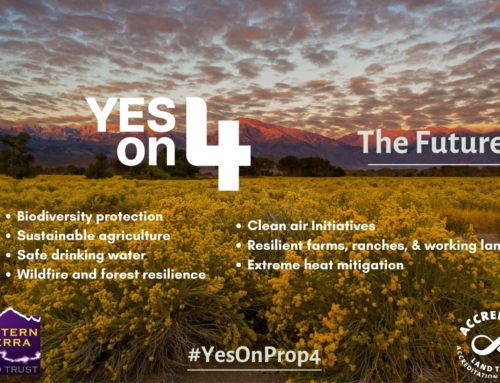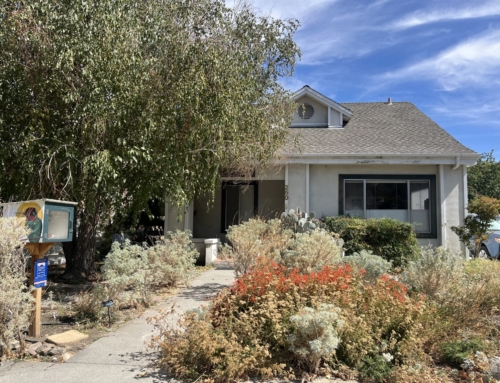August is National Water Quality Month! This summer, ESLT has been hard at work with the Intermountain West Joint Venture’s Water 4 capacity building program to protect one of our most valuable finite resources: clean, fresh water.
What is National Water Quality Month?
Originating in 2005, the month of August is a time to celebrate landmark national policies that were enacted in the 1970s to protect the integrity of our natural water supply. Over fifty years after the Clean Water Act was passed, there is still much work to be done to ensure these resources are protected. Learn more about the origins of National Water Quality Month HERE.

The Rainshadow Effect (Source: Earth: An Introduction to Physical Geology, sixth edition, by Tarbuck and Lutgens.)
Water in the Eastern Sierra
In our east-side valleys, we rely on the cyclical nature of snowpack freezing and melting off our beloved mountain ranges. Clouds form off the California coast, rise over the Sierras, and when air cools over mountaintops, precipitation falls in the form of snow. When the mountains warm up in the spring, that snow melts down an interconnected network of rivers and streams to regenerate the groundwater that supplies plants, animals, and human inhabitants with the water we need to thrive.
For thousands of years, people in our valleys have utilized this flow by diverting water into irrigation ditches and canals that support agricultural and domestic usage. To this day, we are able to capture water as it runs downslope and sink it back into the soil. Our soils not only hold water, but also act as nature’s water treatment plants, filtering out pollutants, chemicals, and high concentrations of salt and minerals. The more water can slowly spread across valley floors, the more it accesses its natural cleaning sources and can ultimately be stored to replenish use by above-ground living things.
Water on Working Landscapes
Like much of the west, stewards of working landscapes in the Eastern Sierra must consider how their available water is used to maximize its benefits to the natural landscape.

Inundated meadows like this one in the Bridgeport Valley allow water to slowly sink into the ground, keeping plants greener and healthier longer into the summer
In partnership with the Natural Resources Conservation Service (NRCS), producers large and small who rely on variable water sources have received financial and technical assistance for conservation work on the lands they manage.
On grazed pastures, NRCS has entered cost-share contracts with local producers to install conservation-oriented flood irrigation infrastructure such as headgates, culverts, and hardened stream crossings through the Environmental Quality Incentives Program (EQIP) and Conservation Stewardship Program (CSP). These efforts have invaluable benefits for the compatibility of agriculture and preserving habitat for vulnerable fish and wildlife.
This year on farms and gardens, NRCS has provided funding and guidance for micro-irrigation, water-efficient sprinklers, and soil moisture sensors to keep land managers informed on the water beneath their ground.

ESLT partners with the Bishop Paiute Tribe’s Water Quality Program to restore livestock fencing along Bishop Creek.

Streambank monitoring along Swauger Creek on an ESLT conservation easement in Mono County

NRCS engineers plan streambank projects along Bishop Creek
The ESLT Stewardship team has also taken hands-on action along vulnerable waterways within our service area, repairing livestock fence and conducting streambank health assessments to prioritize restoration needs.
Interested in free conservation planning on your farm, ranch, or garden? Find your local NRCS office HERE.
Water into the Future
Whether you are a fisherman, a rancher, or an enjoyer of the scenery, life in the Eastern Sierra is intimately connected with our fresh water. This water quality month, ESLT invites you to reflect on the ways all our livelihoods depend on this resource. For all the wildlife, habitat, and landscapes ESLT strives to protect, there would be no life without clean water.
Feeling passionate about water quality? Get your hands dirty and boots wet with ESLT and partners for the 2024 Great Sierra River Cleanup on Saturday, September 21st. We hope to see you there!






Leave A Comment